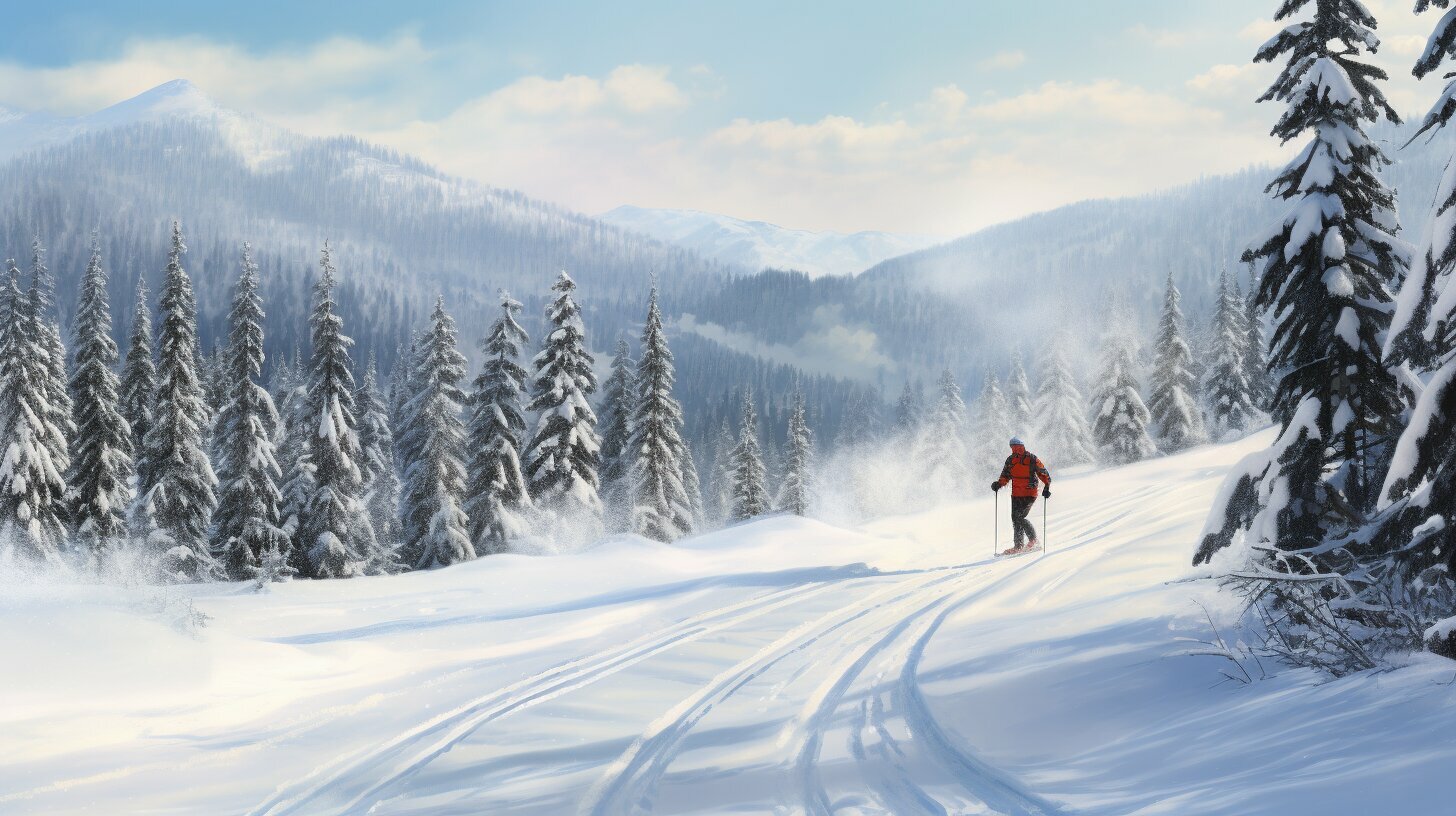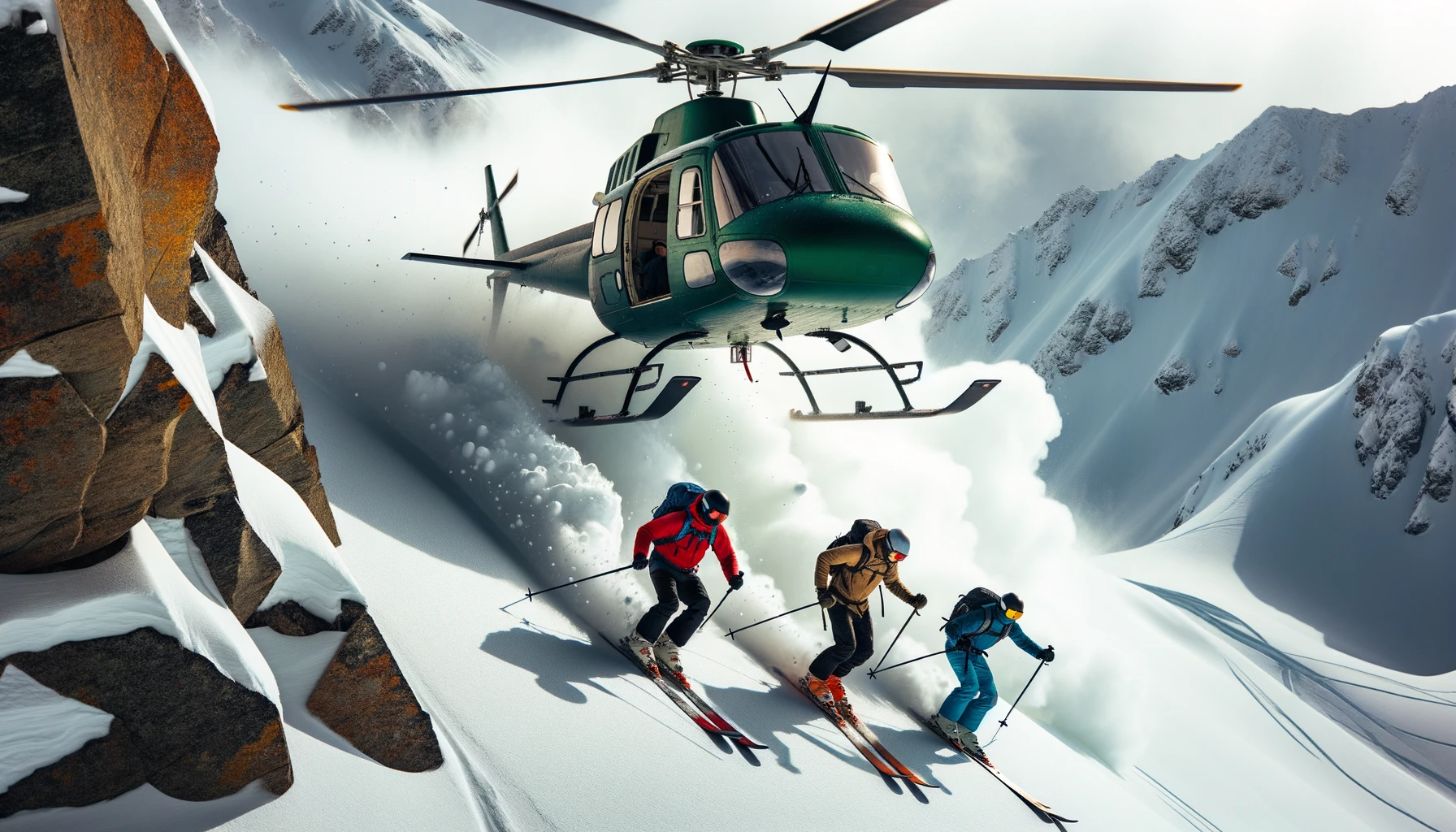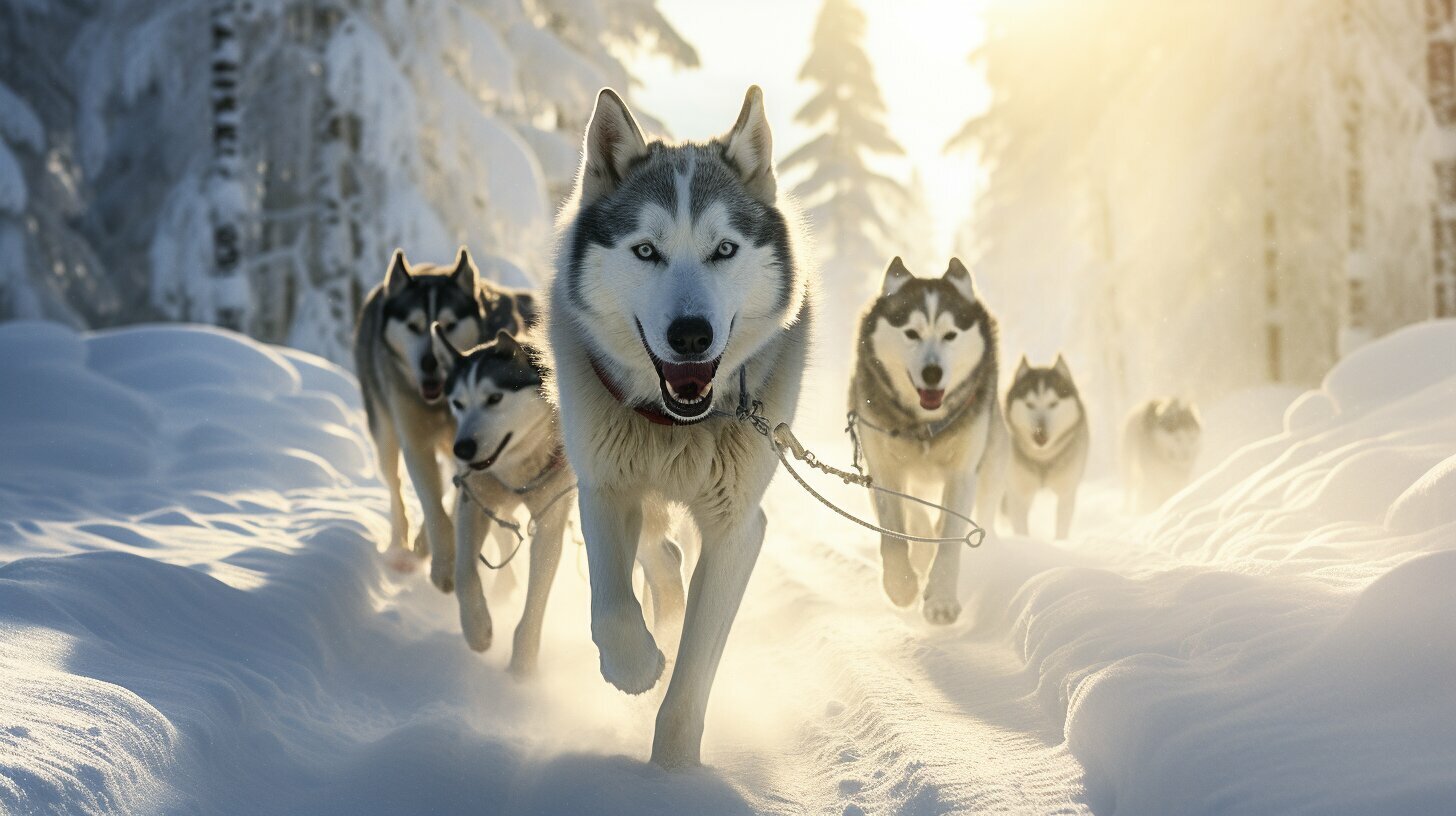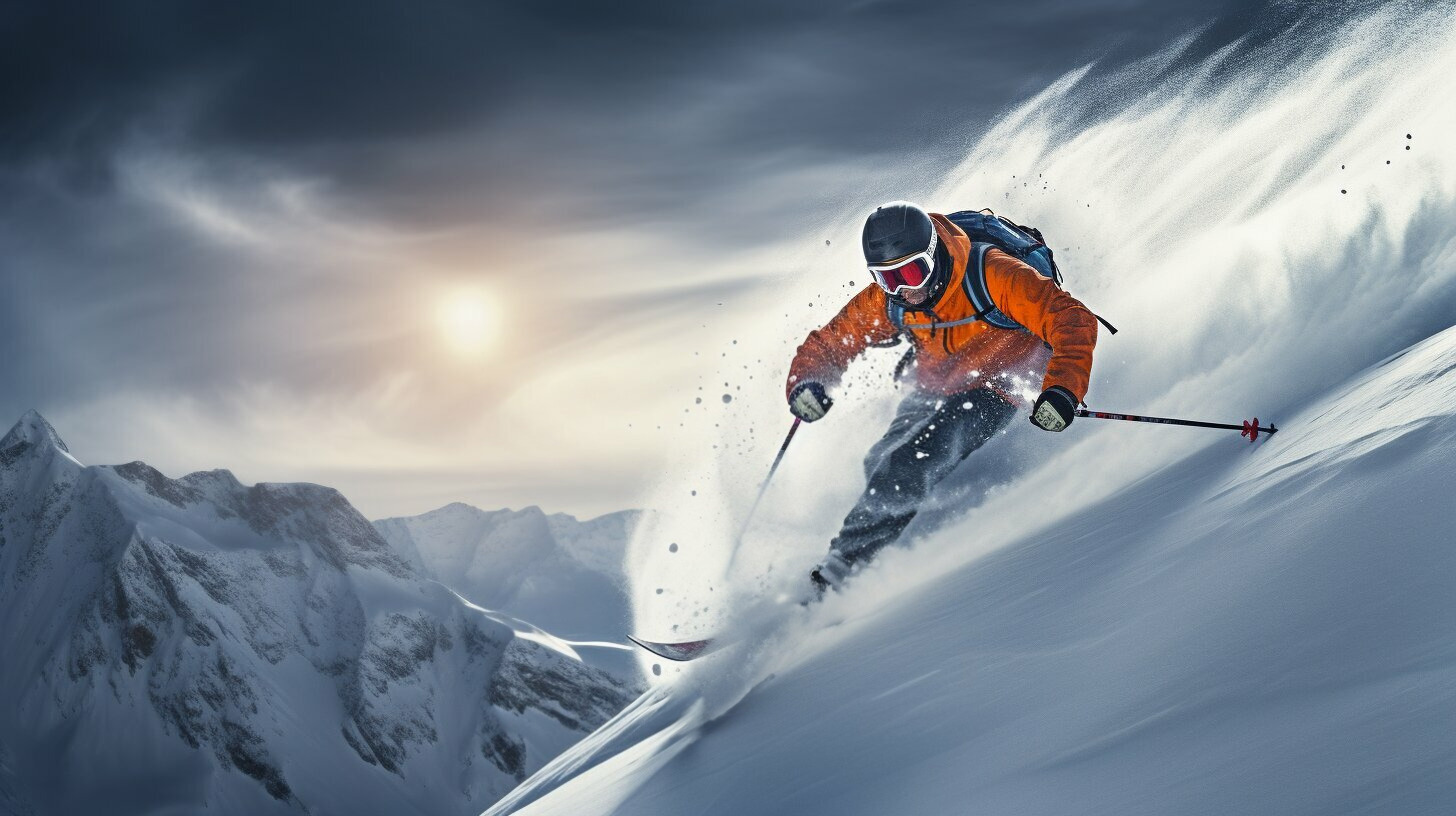Welcome to our comprehensive guide on cross country skiing for beginners. Whether you’re a winter sports enthusiast or simply looking for a new way to stay active during the colder months, cross country skiing is a fantastic option that offers a full-body workout while enjoying the beauty of snow-covered landscapes. In this beginner’s guide, we’ll provide you with all the essential information you need to get started, from choosing the right gear to mastering basic techniques. Let’s begin!
Key Takeaways
- Cross country skiing is a fun and engaging winter activity suitable for beginners.
- Proper gear selection is important for a comfortable and efficient skiing experience.
- Mastering basic cross country skiing techniques is key to improving efficiency and enjoyment on the trails.
- Stay safe by understanding important safety precautions and trail etiquette.
- Consider taking cross country skiing lessons to advance your skills and enhance your overall experience on the trails.
Benefits of Cross Country Skiing for Beginners
As a beginner, cross country skiing is an excellent way to stay active during the colder months. Not only is it a fun and enjoyable activity, but it also offers numerous health benefits. Here are some of the benefits of cross country skiing for beginners:
- Full-body workout: Cross country skiing is a low-impact activity that engages multiple muscle groups, resulting in a full-body workout. This helps to improve your overall fitness, including your strength, endurance, and flexibility.
- Cardiovascular fitness: Cross country skiing is an excellent cardiovascular workout, which helps to improve your heart health and lung capacity. This makes it an ideal activity for people of all fitness levels.
- Burns calories: Cross country skiing is a great way to burn calories, making it an effective weight loss tool. On average, a person can burn up to 500 to 600 calories per hour while cross country skiing.
- Enhances balance and coordination: Cross country skiing requires you to maintain your balance and coordination, particularly when navigating uneven terrain. These skills can be improved over time, leading to better overall balance and coordination.
With these benefits in mind, it’s easy to see why cross country skiing is a great activity for beginners. To make the most of your experience, here are some tips:
Disclosure: When you buy through links on our site, we may earn an affiliate commission.
- Dress in layers: Cross country skiing can be a strenuous activity, so dressing appropriately for the weather is essential. Wear moisture-wicking clothing to keep you dry and warm, and avoid cotton fabrics which can trap moisture and make you feel cold.
- Stay hydrated: It’s important to stay hydrated throughout your cross country skiing session. Bring a water bottle or hydration pack with you, and take regular sips of water throughout your workout.
- Start slow: If you’re new to cross country skiing, start slow and gradually build up your endurance and skill level. Take regular breaks and listen to your body to avoid injury or burnout.
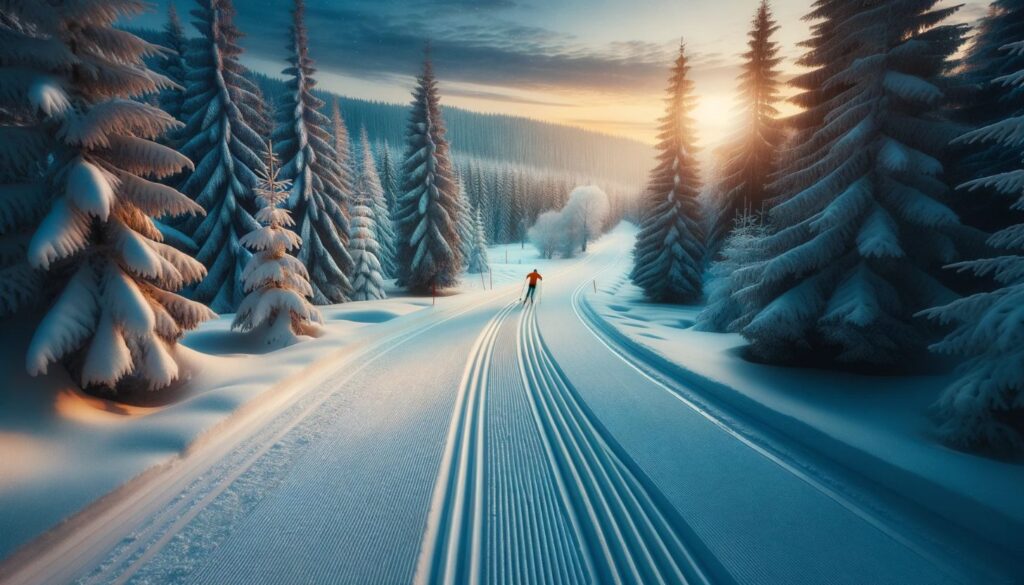
Essential Gear for Beginner Cross Country Skiers
When it comes to cross country skiing for beginners, having the right gear is essential for a safe and enjoyable experience. Here are some tips on how to choose the right gear for your needs:
| Equipment | Description |
|---|---|
| Cross country skis | Look for skis that have a wide, stable base with a softer flex to make turning easier. The skis should also be the right length for your height and weight. |
| Cross country ski boots | Boots should fit snugly, providing support and flexibility for your ankles. They should also match the type of binding on your skis. |
| Cross country ski poles | Choose poles that are the right length for your height and skiing style. Look for poles that are lightweight, durable, and have a comfortable grip. |
| Clothing | Dress in layers to stay warm and comfortable while skiing. Look for moisture-wicking fabrics that will keep you dry and warm. Don’t forget a hat, gloves, and sunglasses or goggles. |
It’s important to note that buying cross country skiing gear can be expensive, but there are options for different budgets. You may want to consider renting gear at a local ski shop or buying used gear to get started. As you progress in the sport, you may want to invest in higher-quality equipment.
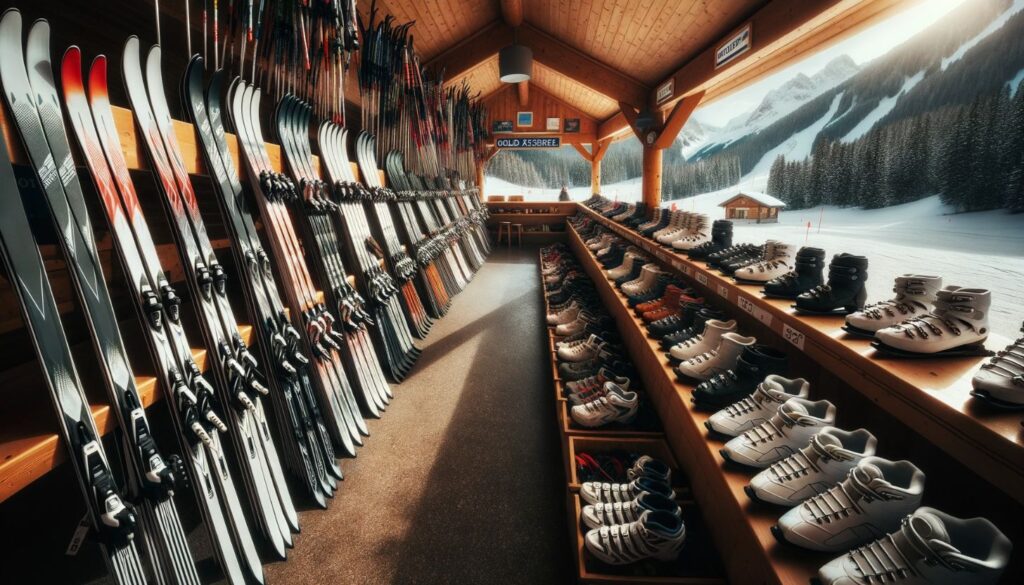
By choosing the right gear for your needs, you’ll have a comfortable and safe experience on the trails. In the next section, we’ll share some tips on finding beginner-friendly cross country skiing trails.
Finding Beginner-Friendly Cross Country Skiing Trails
Cross country skiing for beginners requires a safe and welcoming environment for learning and practice. That is why it’s important to choose beginner-friendly trails that provide a comfortable and manageable experience. Luckily, there are plenty of options in the United States that cater to novice skiers.
Some of the top beginner-friendly cross country skiing trails in the United States include:
| Trail Name | State | Difficulty |
|---|---|---|
| Methow Trails | Washington | Easy |
| Jackson Ski Touring Center | New Hampshire | Easy |
| Royal Gorge Cross Country Resort | California | Easy |
When choosing a trail, consider the trail’s difficulty level, as well as its grooming and snow conditions. Look for trails with relatively flat terrain, gentle slopes, and wide tracks to provide a stable base for beginners. Avoid trails with steep inclines or sharp turns, as these may be challenging for novice skiers.
Some other tips for finding beginner-friendly cross country skiing trails include:
- Research trails in your local area or destination ahead of time to find out about their difficulty levels and amenities.
- Ask for recommendations from cross country skiing instructors, ski shops, or local tourism offices.
- Check online reviews or forums for firsthand accounts from other skiers.
Remember, the goal is to have fun and build confidence as a beginner cross country skier. By choosing the right trails and environment, you’ll be on your way to mastering this exciting winter sport.
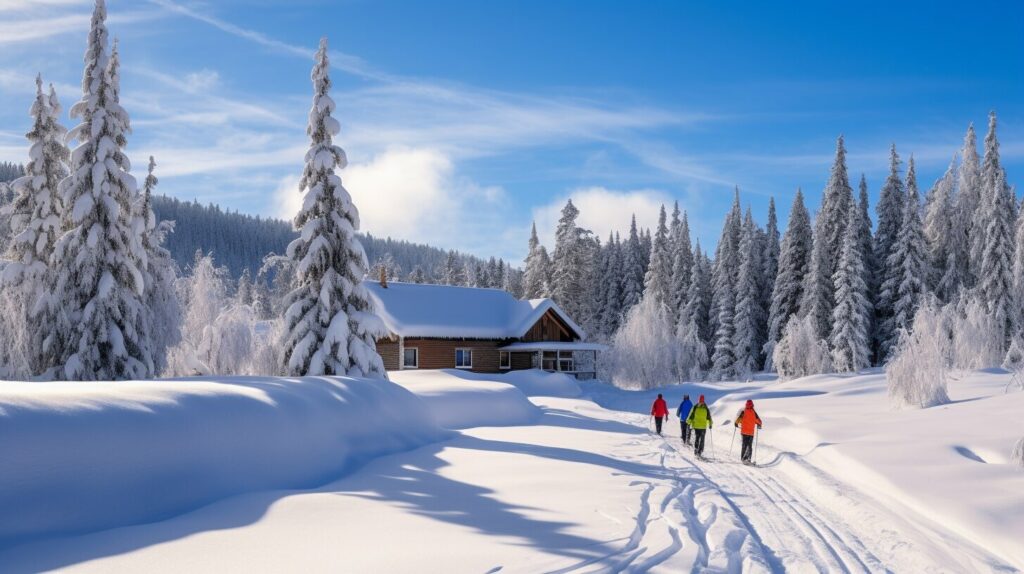
Follow our guide to cross country skiing for beginners for additional tips and resources on getting started.
Basic Cross Country Skiing Techniques for Beginners
Now that you have your gear, it’s time to learn some basic cross country skiing techniques. Proper technique is essential for efficient and enjoyable skiing. Start by practicing on flat terrain before moving on to more challenging trails. Here are two fundamental techniques to get you started:
Classic Technique
The classic technique is the traditional style of cross country skiing. Here’s how to do it:
- Stand with your feet hip-width apart and your skis parallel. Your weight should be evenly distributed on both skis.
- Bend your knees slightly and lean forward from your ankles.
- As you glide forward on one ski, push off with the other ski and use your poles for balance and momentum.
- Shift your weight onto the gliding ski and repeat the process with the other ski.
- Practice timing your pole plants with your stride.
Skate Technique
The skate technique is a faster and more dynamic style of cross country skiing. Here’s how to do it:
- Stand with your feet hip-width apart, but with one ski slightly behind the other.
- Bend your knees and keep your weight centered over the front ski.
- Push off with the back ski, gliding forward with a skating motion. Your poles should also be used for balance and momentum.
- Switch your weight to the other ski and repeat the process, shifting your weight quickly and smoothly from side to side.
- Practice timing your pole plants with your stride.
Consider taking cross country skiing lessons to improve your technique. Professional guidance can help you progress faster and avoid developing bad habits. You can find lessons at ski resorts, local clubs, and even online.
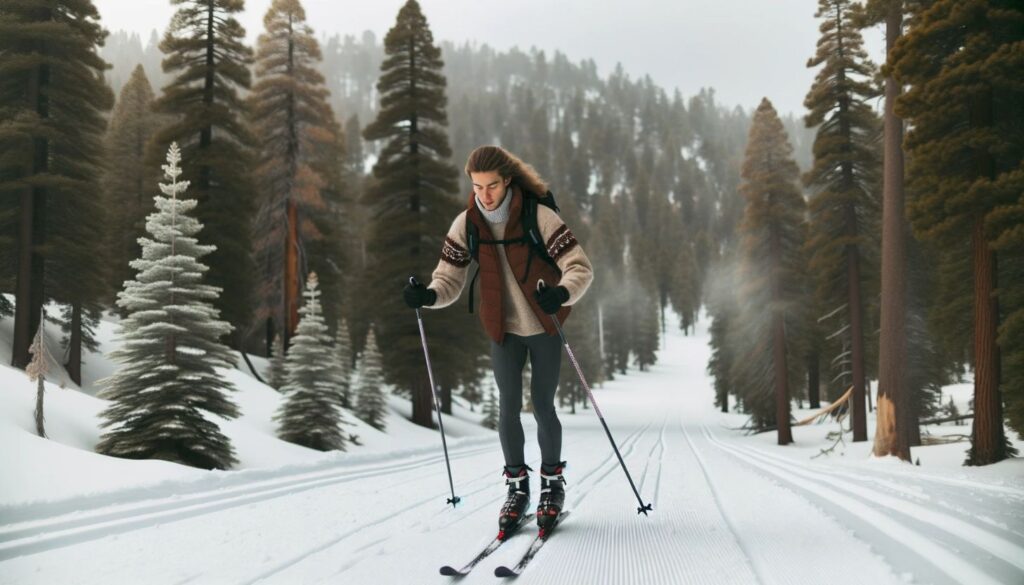
Tips for Beginner Cross Country Skiers
As a beginner cross country skier, it’s important to stay safe on the trails. Here are some essential safety tips to keep in mind:
- Dress appropriately. Make sure you wear clothing that is warm, breathable, and wicks away moisture. Layers are essential, so you can adjust your clothing as needed. Don’t forget to wear a hat and gloves, and protect your eyes with sunglasses or goggles.
- Understand trail signage. Take the time to read and follow trail signs and markings. They will help you navigate through the trails and avoid potential hazards.
- Carry essential equipment. Always carry a map, compass, and whistle with you. Also, bring water and snacks to keep yourself hydrated and energized on longer trails.
- Practice proper technique. Learning the proper technique will not only improve your performance, but it will also help you avoid injuries. Take lessons or practice with an experienced friend to ensure you’re using the correct technique.
- Be aware of your surroundings. Keep an eye out for other skiers, wildlife, and any potential hazards such as rocks or tree stumps. Maintain a safe distance from other skiers and avoid skiing too fast for the conditions of the trail.
By following these safety tips, you can minimize the risks and enjoy your cross country skiing experience to the fullest.
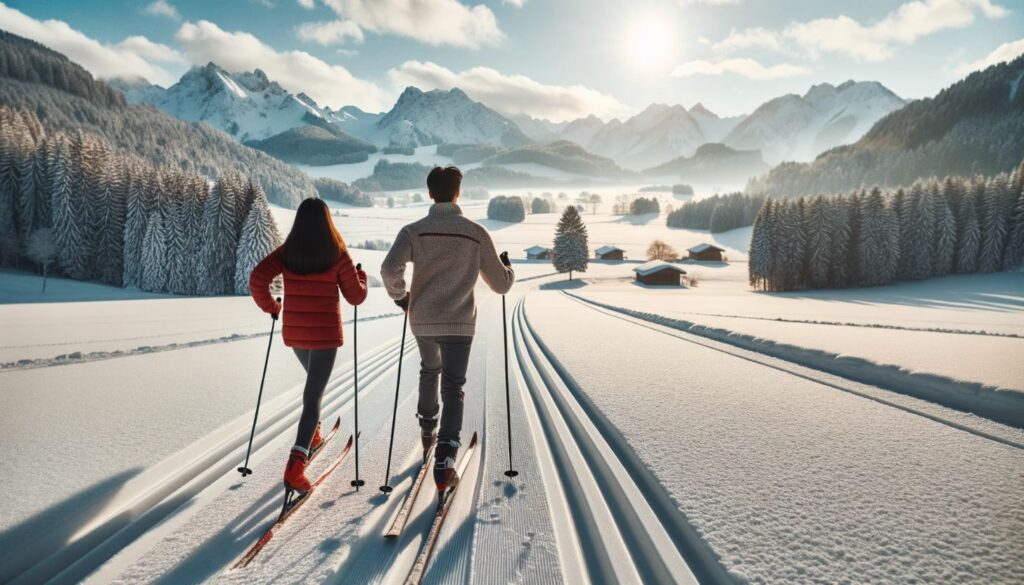
Cross Country Skiing Lessons
If you’re serious about improving your cross country skiing skills, consider taking lessons. Lessons can help you refine your technique, increase your confidence on the trails and provide ski-specific fitness training.
Group lessons are a great option for beginners who want to learn from experienced instructors while socializing with other skiers. Private lessons offer more personalized attention and cater to individual skill levels. Online resources such as videos and tutorials can be useful for practicing techniques at your own pace.
Before choosing a lesson option, research your local cross country skiing facilities, check instructor qualifications and read reviews. Many ski resorts offer lesson packages that include equipment rentals and lift tickets.
Remember, practice makes perfect. Applying the skills you learn in your lessons on the trails will help you become a better cross country skier. With time and experience, you’ll find yourself tackling more challenging terrain and enjoying the sport even more.
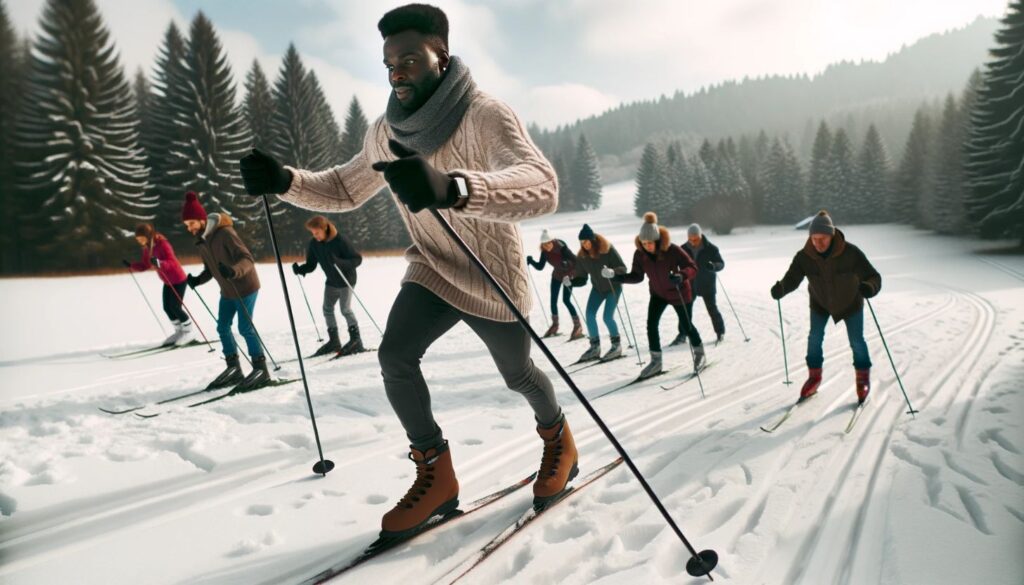
With cross country skiing lessons, you’ll be well on your way to becoming a pro on the trails. Keep a lookout for local lesson options and take advantage of the opportunity to advance your skills.
Cross Country Skiing Etiquette for Beginners
When you hit the trails for a cross country skiing adventure, it’s important to follow proper etiquette to ensure a safe and enjoyable experience for everyone. Here are some essential tips to keep in mind:
- Yield to skiers going uphill: When skiing on a trail, always yield to skiers who are climbing uphill, as they have the right of way.
- Stay on the trail: Avoid skiing off-trail, as this can damage the environment and disturb wildlife habitats.
- Don’t litter: Always pack out your trash and dispose of it properly.
- Respect private property: Avoid skiing on private property unless you have obtained permission from the landowner.
- Be courteous to other skiers: When passing other skiers, announce your presence by saying “on your left” or “on your right” to avoid collisions.
- Follow trail signs: Pay attention to trail signs and follow designated routes to avoid getting lost or straying into unsafe areas.
- Share the trail: When skiing with a group, be aware of your surroundings and avoid blocking the trail for other skiers.
By following these basic tips, you’ll be able to enjoy cross country skiing in a safe and respectful manner. Remember to always be aware of your surroundings and to treat other skiers and the environment with care and consideration.
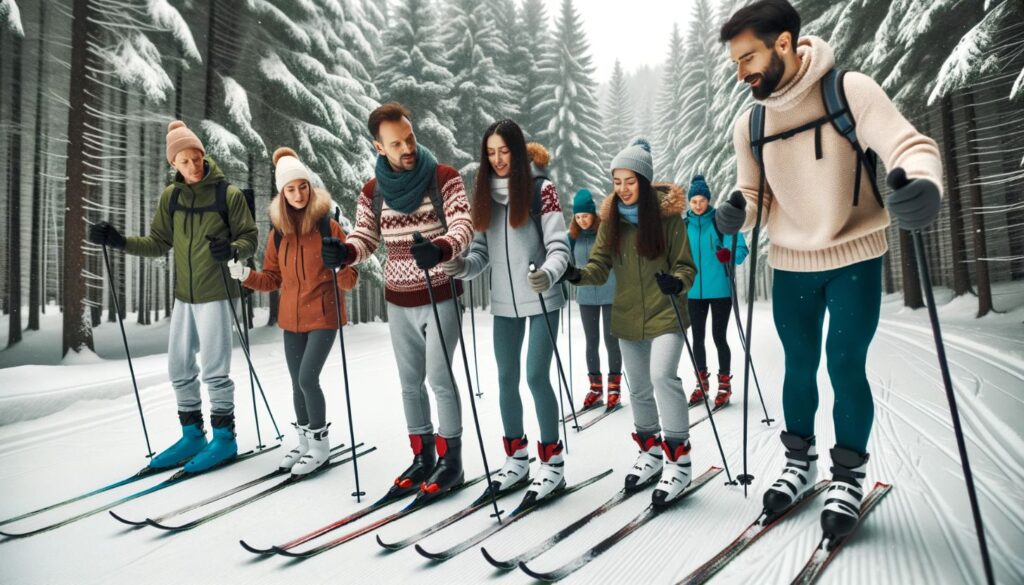
Skiing Gear Maintenance
Proper maintenance of your cross country skiing equipment is crucial for performance and longevity. By following these tips, you can ensure that your gear is in top condition for each outing.
Start by storing your skis in a cool, dry place to prevent warping and damage. Keep them away from direct sunlight, which can cause the base and bindings to deteriorate.
When it comes to cleaning your skis, use a soft cloth to wipe off any dirt or debris after each use. Avoid using harsh chemicals or abrasive materials that can scratch the surface or damage the bindings.
Waxing your skis is also an essential component of maintenance. The wax provides a protective layer that helps prevent damage while improving glide and making the skis easier to control.
Boot and pole maintenance is also important. Make sure to store your boots in a dry, ventilated area to prevent odor and mildew. You can use a boot dryer or remove the liners to speed up the drying process.
As for your poles, check for any damage or signs of wear and tear. Replace any damaged parts promptly to ensure optimal performance and safety.
By taking proper care of your cross country skiing equipment, you’ll enjoy better performance and longevity. Consider investing in a tune-up or professional service if needed to keep your gear in top condition.
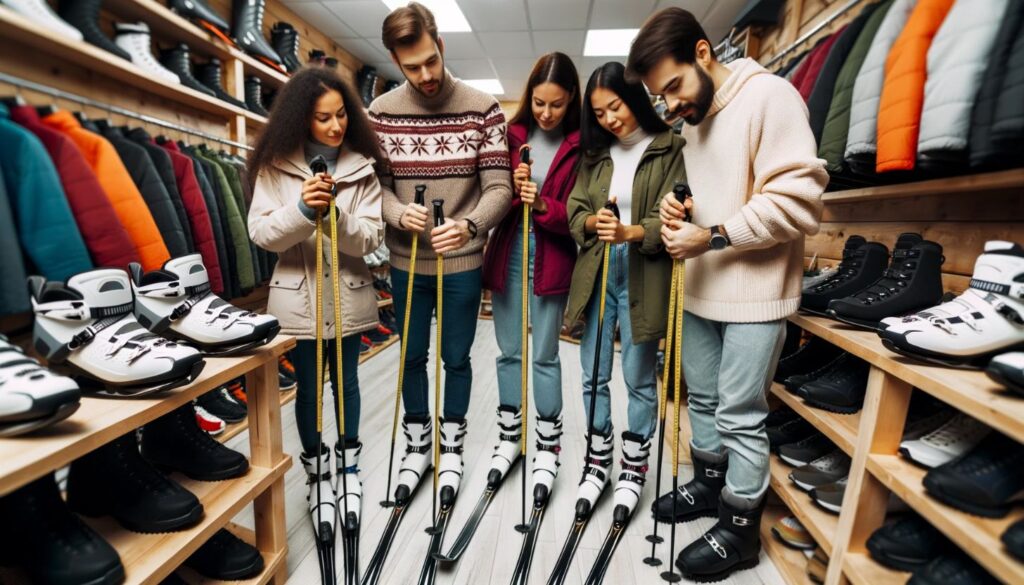
Conclusion
You now have all the essential information and tips you need to get started on your cross country skiing journey. Whether you choose to explore local trails or plan an adventure at a renowned destination, cross country skiing is the perfect winter sport for staying active and healthy.
Remember to always choose the right gear, find beginner-friendly trails, and practice basic techniques. Additionally, stay safe on the trails by following proper etiquette, carrying essential safety equipment, and dressing appropriately for the weather. With time and practice, you’ll master the fundamental techniques of cross country skiing and enjoy the full-body workout it provides.
Don’t be afraid to take cross country skiing lessons to advance your skills or to maintain your equipment for optimal performance. With proper care, your gear will last for seasons to come. Now, go out and have fun on the trails!
FAQ
How do I choose the right gear for cross country skiing?
Choosing the right gear for cross country skiing is crucial for a comfortable and enjoyable experience. When selecting skis, consider your weight and skiing ability. Boots should provide good ankle support and be compatible with your bindings. Poles should be the right size for your height. Additionally, dress in layers and wear moisture-wicking clothing to stay warm and dry.
Can I cross country ski with regular downhill skis?
While it’s possible to cross country ski with downhill skis, it’s not recommended. Downhill skis are designed for different terrain and have different features than cross country skis. Cross country skis are longer, narrower, and lighter, allowing for better gliding and maneuverability on flat terrain.
Do I need to take lessons before trying cross country skiing?
Taking lessons before trying cross country skiing is highly recommended, especially if you’re a beginner. Lessons will teach you the proper techniques, help you avoid common mistakes, and ensure you have a safe and enjoyable experience on the trails.
How do I wax my cross country skis?
Waxing your cross country skis helps improve glide and protects the base from damage. To wax your skis, start by cleaning the bases with a soft brush. Then, select the appropriate wax for the snow conditions and apply it to the gliding zones. Use a waxing iron to melt the wax into the base and let it cool before scraping off any excess wax.
Can I cross country ski if I’m not in good shape?
Cross country skiing is a great activity for people of all fitness levels. The intensity can be adjusted based on your abilities and goals. If you’re not in good shape, start with shorter and easier trails, take breaks when needed, and gradually increase the distance and difficulty as you improve your fitness.
Are there cross country skiing trails near me?
Cross country skiing trails can be found in various locations, including parks, ski resorts, and dedicated trail systems. To find trails near you, check with local outdoor recreation departments, ski clubs, or use online resources that provide trail maps and information.
How should I dress for cross country skiing?
Dressing appropriately for cross country skiing is essential to stay comfortable and protected from the elements. Layering is key, allowing you to adjust your clothing to your activity level and the weather conditions. Wear moisture-wicking base layers, insulating mid-layers, and a windproof outer shell. Don’t forget to protect your extremities with hats, gloves, and warm socks.
Can I cross country ski alone?
Cross country skiing alone is possible, but it’s recommended to ski with a partner or in areas where there are other skiers. Skiing with others provides safety in case of accidents or emergencies and adds to the enjoyment of the sport.
How do I know which cross country skiing technique to use?
There are two main cross country skiing techniques: classic and skate skiing. The choice of technique depends on your skill level, the terrain you’re skiing on, and personal preference. Classic skiing is suitable for most beginners and involves a gliding stride with a diagonal motion. Skate skiing is more advanced and resembles ice skating, using a side-to-side pushing motion for increased speed.
What are the health benefits of cross country skiing?
Cross country skiing offers numerous health benefits. It provides a full-body workout, engaging multiple muscle groups and improving cardiovascular fitness. It also enhances balance, coordination, and flexibility. Regular cross country skiing can help with weight management, reduce stress, and boost overall well-being.

